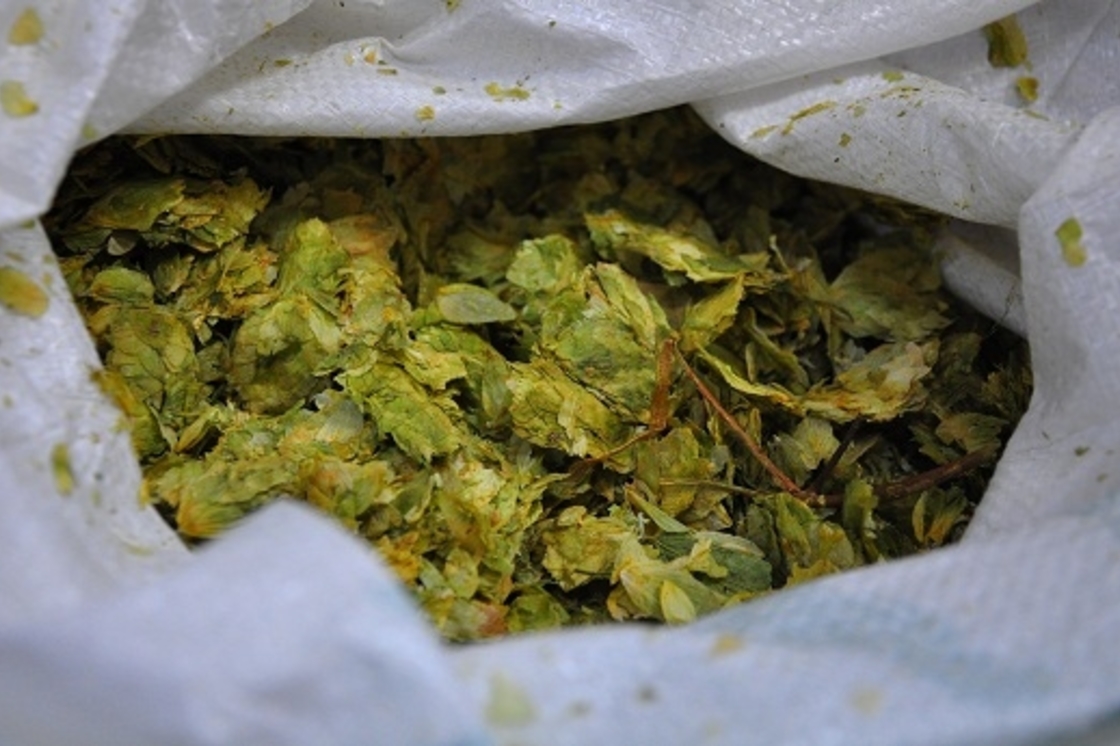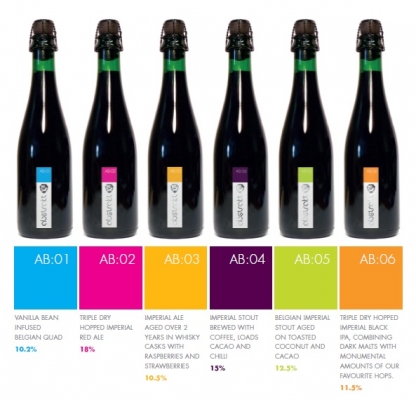How we made AB:06


We have just under 200 bottles left, you can pick one up here: http://www.brewdog.com/product/abstrakt-ab06
AB06 is a 11.5% Imperial Black IPA which has been triple dry hopped. This beer is savage; boasting more bitterness and more hops than any BrewDog creation to date, combining loads of awesome malts and monumental amounts of our favourite hops. Here is how we made it.
Get an awesome Marris otter base

Add some hardcore dark & speciality malts, including our epic de-husked dark malts.

Ensure we have the correct mashing in temperature as we overload our poor mash tun. (check out how high tech we are!)

Use loads of these in the kettle

Bowman and James clearing the spent grain. It was a huge mash

And use loads of these after fermntation

Taste from a jug after dry-hopping. Then add even more dry hops.

Then bottle.

As always with Abstrakt, each bottle is individually numbered and very well suited to ageing. Drink one now and then age one for a couple of years and see how it develops. Cellar it up.
We have just under 200 bottles left, you can pick one up here: http://www.brewdog.com/product/abstrakt-ab06
*Just a quick note on the colour of the Abstrakt bottles in light of some comments from www.beerleaks.org Abstrakt bottles are extremely thick, dark green: Pale green and clear glass bottles are very damaging to lighter beers as they cause them to become light struck, skunky and hasten the ageing process. Pale Ales and Lagers are especially susceptible to this when packaged in light green or clear glass bottles. Our Abstrakt bottles are also much thicker than our standard our standard brown bottles. In lab analysis from the manufacturer, the increased thickness makes them as light proof as our dark brown bottles which are thinner.
Abstrakts are beer which are designed to be cellared and aged. They are all extremely big, bold and robust beers such as 18% Red Ales, 15% Imperial Stouts and 11+% Black (as sin!) IIPAs. As the beers are so big and robust, they can easily handle pretty much any type of packaging. Mikkeller also uses the same bottle for his very big, very stable beers. One of the main aims of the Abstrakt series is to showcase the effect of ageing, so even if the dark green bottles had any effect (which the extra thickness ensures they don't), a slight hastening of ageing would not be detrimental.
We would never use anything other than brown bottles for our lighter and lower ABV beers such as 77 Lager, Punk IPA and Hardcore IPA. Clear & light green bottles are massively damaging to lagers (especially light lagers) and pale ales. The Abstrakt beers are big and robust enough to look after themselves in pretty much any type of packaging, so can more than handle any small step between dark brown and thick dark green. Industrial, adjunct lagers however, are not.
The protection a bottle gives to a beer is a product of both the glass colour and the thickness. Anyone who has held an Abstrakt bottle in their paws will appreciate just how thick the glass is!

Join the Discussion
Comments (9)